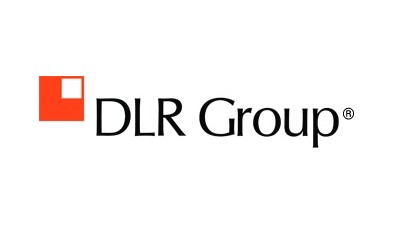To Stay Competitive, Office Buildings Need More Than A Face-Lift

Wooing tenants with amenities has become the go-to strategy for owners of office buildings. As companies look for ways to attract and retain talented employees, many are turning to workplace design as a way to showcase forward thinking and a positive corporate culture. In a competitive office leasing market, the property best equipped to accommodate the blurred lines between live-work-play wins the tenant.
Urban offices have taken a cue from amenity-rich counterparts in the suburbs. Multi-tenant office buildings in metro areas have transformed into bustling communities boasting fitness classes, cocktail hours and barbershops. For existing office buildings, retooling common spaces and adding amenities that meet expectations of employees working in a 24/7 economy is a smart investment.
New urban Class-A office buildings have capitalized on this shift, offering amenity-packed spaces and modern infrastructure. The push has created an arms race within existing building stock, and owners have had to upgrade offerings and increase tenant allowances to stay competitive.
In the Denver market and across the U.S., design and engineering firm DLR Group is working to transform older buildings into modern workspaces that attract and retain top companies. As office space in submarkets like the Denver Tech Center and Boulder becomes limited, drawing tech companies to newer buildings in LoDo and the Central Business District, property owners are starting to provide an ever-growing list of amenities to keep pace.

“It’s so much more than reskinning the exterior of the building, renovating the lobby or putting new finishes in the elevator,” DLR Group Global Workplace Sector Leader Angela Castleton said. “There is this whole new expectation of programming and different kinds of amenities, and these buildings have to do things differently than they have in the past.”
Companies outside of urban areas have long experimented with the idea of the corporate campus. In the 1990s, General Mills’ Minneapolis HQ featured amenities like a day care, a grocery store, a dry cleaner and even a bank, DLR Group project manager Adam Kezziah said.
Encouraged by the influx of young workers into urban areas, companies have traded in horizontal campuses for vertical ones that stack amenities in one building. Rather than rely on outside amenities to meet the needs of tenants, the buildings add to the variety of mixed-used options available in these denser submarkets.
“There is a blending now of life and work,” Kezziah said. “Everyone works all the time, on and off. You have to be able to take an hour and go to the gym, pick up the laundry or get a beer. For companies to recruit the people they want, buildings have to provide these things.”
Denver developers built a large share of the downtown core’s office inventory in the 1960s, 1970s and 1980s. These buildings were not designed to accommodate the amenities tenants now demand, and owners must find ways to compete with modern glass-and-steel facades and high-end facilities. Some owners have chosen to dedicate the entire first few floors of their buildings to retail and amenity space while others have added floor-to-ceiling windows to improve access to daylight.

Technology has become a major deciding factor in office selection. With the majority of jobs requiring tech skills by 2020, older buildings need to prove they have the infrastructure to support increased computing and electrical demand. Wired Certification, a rating system from WiredScore that empowers landlords to understand, improve and promote their buildings' digital infrastructure, has become a benchmark for prospective tenants.
“People have a vision of what they want offices to be like but then there are these technological obstacles in the way,” Castleton said. "There are these invisible influences that also need to change before modernized amenities can be truly successful. Bringing in-house engineering and commissioning specialists into design discussions early on helps to suss out potential systems hurdles and inefficiencies before they become costly additions.”
The benefit of building amenities can extend beyond an appeal to office tenants. DLR Group is working with a client to reposition a property steps from Denver’s Union Station. By expanding the existing patio and opening access to tenants and patrons of a restaurant on the ground floor, the owner can optimize activity and foot traffic. The building becomes an integrated part of the neighborhood while ensuring the property maintains value independent of office leases.
Creating co-working spaces in existing buildings can be another method of maintaining competitiveness. As more companies look to cut costs by scaling down and encouraging remote work, co-working space gives businesses the option to pick and choose workspaces based on their current needs. It also creates an opportunity for companies to interact and network, a growing expectation among office tenants, Kezziah said.
Co-working space is one of many amenities that give existing office buildings a leg up when competing with newer building stock to win prospective tenants.
To learn more about this Bisnow content partner, click here.

